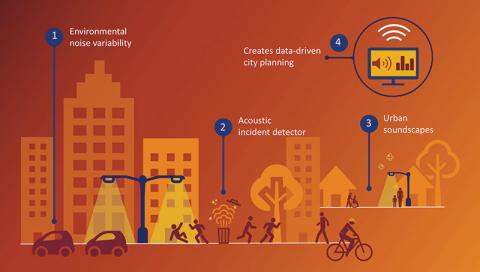
By incorporating noise-monitoring sensors on light poles, Los Angeles explores another application for connected street lighting
By Susanne Seitinger
City lights are dazzling, but they’re more than ubiquitous fixtures illuminating the public spaces where people live, work, shop, dine and interact; they are potential touchpoints with a significant role in our increasingly digital world. Innovative LED lighting is helping to generate safer, more livable and more responsive environments, in which the public infrastructure is as connected as we are. Globally, just 2 percent of installed street lighting systems are connected, but this number is set to reach 35 percent by 2025, according to a recent market analysis from Philips. Connected lighting empowers cities to transform every light into a smart hub, each pole capable of collecting a range of data points about the city, thereby providing value beyond basic illumination. The potential applications of connected street lighting are varied and expansive. The data collected, for example, can help monitor the parking availability on city streets; measure airborne pollution and the impact of weather on city streets; track energy use; and, of course, report streetlight and other more advanced data for operations.